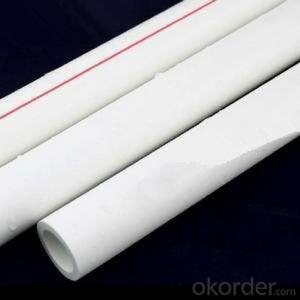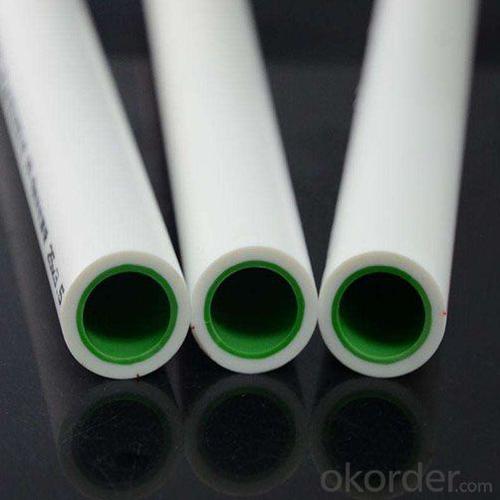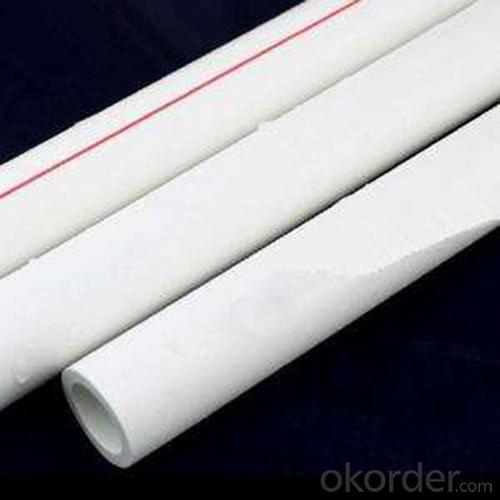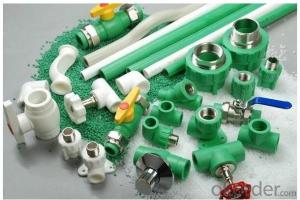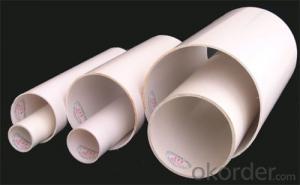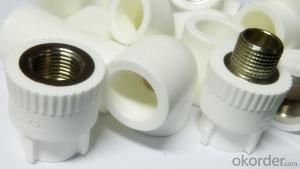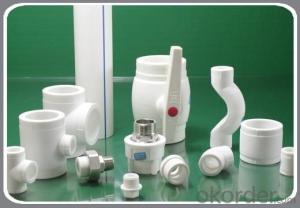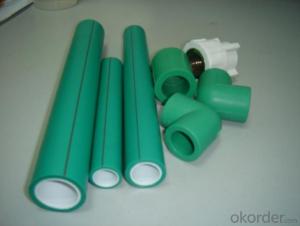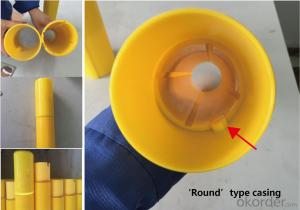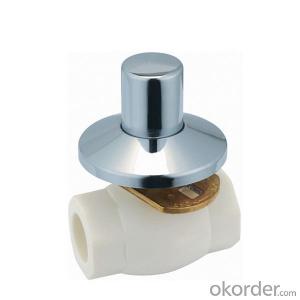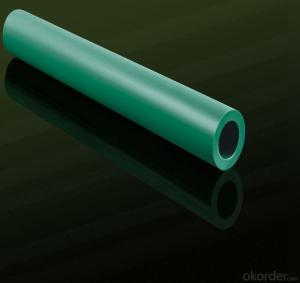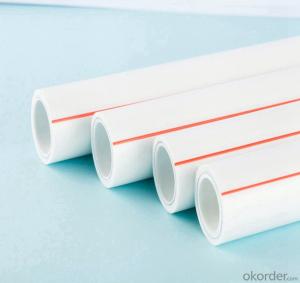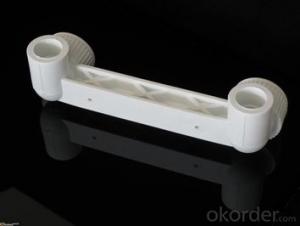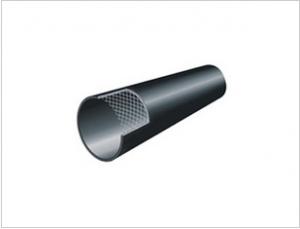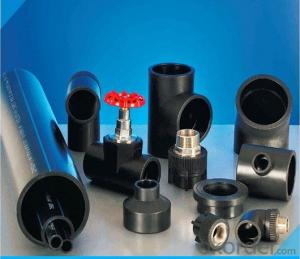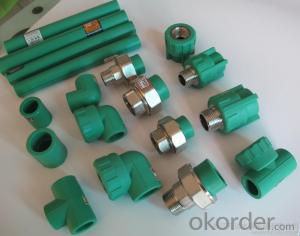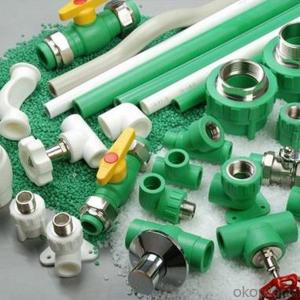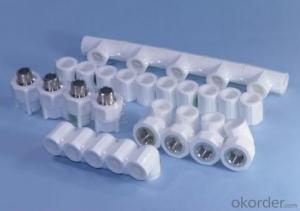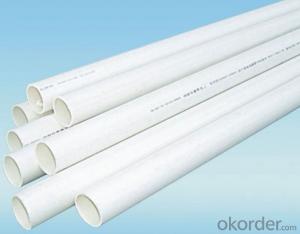Durable Quality Plastic Air Pipe Fittings with Good Price - New PP-R Household Plastic Pipe Made in China
- Loading Port:
- Tianjin
- Payment Terms:
- TT OR LC
- Min Order Qty:
- 200 m
- Supply Capability:
- 10000 m/month
OKorder Service Pledge
OKorder Financial Service
You Might Also Like
Describe Of Products:
The comprehensive technical performance and economic indicator of PP-R are much better than galvanized pipe, UPVC pipe, polyethylene-aluminum compound pipe, PE-X (cross-linked polyethylene) and polybutylene pipe etc. For this reason PP-R is the leading products and widely used for feed-water piping in developed countries in Europe and America.
Nowadays PPR pipes win more attention and have been used all over the whole world more widely with its excellent sanitization performance, high heat resistance, compression resistance, corrosion resistance, pliability and seismic performance which make PP-R the real environmental friendly pipe.
Specifications:
Brand: CMAX
Product name: cap
Shape: equal
Head code: round
Type: PPR fittings
Material: PP-R, PP-RCT
Size: 20mm-110mm
Working temperature: 0-95℃
Working life: 50 years
Working pressure: PN25
Technics: casting
Connection: welding
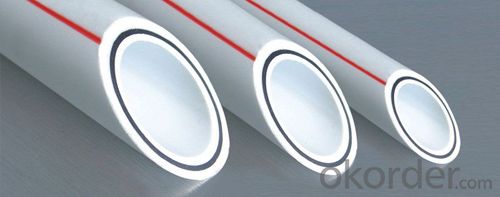
PPR Pipes Advantages:
1. Greatly reduced linear expansion coefficient, only 1/4 of that of PPR.
2. 100% oxygen tightness, suitable for heating system.
3. Improved resistant to impulse under low temperature, resistant to UV-rays.
4. Easily detected by detector when embedded, owing to the metal layer.
FAQ
Q: What you offer?
A: Any kinds of goods you need, just send us the request, we will reply you back with the details very soon.
Q: Product quality and delivery time?
A: Normally 7-15 days after the order confirmed, we will collect the goods and inspect each of the items and send you the inspection photos for you to confirm.
Q: What's the regular shipping port?
A: Ningbo, Shanghai.
Q: What's your payment?
A: T/T or L/C at sight
- Q: Can plastic pipe fittings be used for oil refinery processes?
- Yes, plastic pipe fittings can be used for certain oil refinery processes, particularly those that involve non-corrosive or non-hazardous fluids at lower pressures and temperatures. However, for processes involving corrosive chemicals, high temperatures, or high pressures, it is recommended to use more durable materials such as stainless steel or other metal alloys.
- Q: How do you remove a plastic pipe fitting?
- To remove a plastic pipe fitting, you can follow these steps: 1. Turn off the water supply: Before removing any pipe fitting, it is essential to turn off the water supply to prevent any leaks or accidents. 2. Prepare the area: Clear the surrounding area of any obstructions or debris that may hinder your work. 3. Identify the type of fitting: Determine the type of plastic fitting you are dealing with. Common types include compression fittings, push-to-connect fittings, or threaded fittings. 4. Compression fittings: For compression fittings, you will need two adjustable wrenches. Use one wrench to hold the fitting in place while using the other wrench to turn the nut counterclockwise until it comes off. 5. Push-to-connect fittings: Push-to-connect fittings typically have a release mechanism built into them. Locate the release collar near the fitting, then push it down firmly towards the pipe while pulling the pipe away from the fitting. This will release the connection. 6. Threaded fittings: Threaded fittings require the use of a pipe wrench or adjustable wrench. Place the wrench on the fitting's body or hex section and turn it counterclockwise to loosen and remove the fitting. 7. Inspect and clean: Once the fitting is removed, inspect the pipe and fitting for any damage or debris. Clean the pipe end and the inside of the fitting to ensure a proper connection when reinstalling it or replacing it with a new fitting. Remember to exercise caution and follow safety guidelines when working with plumbing systems. If you are unsure or encounter any difficulties, it is advisable to consult a professional plumber.
- Q: What are the connecting modes of steel wire mesh and plastic composite pipe?
- The tube surface melting and melt, melt pipe expansion and full clearance, until the appearance of pipe has two mutually melt, melt together, cooling after molding, pipe fittings are closely connected as a whole.
- Q: Can plastic pipe fittings be used in water well systems?
- Yes, plastic pipe fittings can be used in water well systems. Plastic fittings are commonly used in water well systems due to their durability, resistance to corrosion, and ease of installation. They are also cost-effective and can withstand high pressure and temperature variations, making them suitable for various water well applications.
- Q: Can plastic pipe fittings be used in geothermal heat pump systems?
- Yes, plastic pipe fittings can be used in geothermal heat pump systems. Plastic fittings are commonly used in these systems due to their durability, corrosion resistance, and ease of installation. They are compatible with the high temperatures and pressures typically found in geothermal heat pump systems, making them a suitable choice for this application.
- Q: Can plastic pipe fittings be used for oil and gas pipelines?
- No, plastic pipe fittings are not suitable for oil and gas pipelines. These pipelines require materials that can withstand high pressure, extreme temperatures, and corrosive environments, which are characteristics that plastic fittings do not possess. Metal fittings, such as steel or iron, are commonly used in oil and gas pipelines due to their strength and durability.
- Q: Can plastic pipe fittings be used in culvert systems?
- Yes, plastic pipe fittings can be used in culvert systems. Plastic pipe fittings are commonly used as they are lightweight, resistant to corrosion, and easy to install. They can effectively connect and redirect the flow of water in culvert systems, making them a suitable choice for various applications.
- Q: What are the specifications of PVC tubes?
- Deng Quan plastic PVC-U drainage pipe is a well - developed drainage pipe series, which has been widely used at home and abroad. Deng Quan plastic production of PVC-U water supply pipe has long service life compared to the cast iron pipe, corrosion resistance and other advantages; in the construction of more light weight characteristics, handling installation and easy connection are widely used in the civil construction of sewage, chemical sewage, rainwater and other fields. PVC-U drain pipe, pipe fittings comply with the standard requirements of GB/T, 5836.1-2006 and GB/T 5836.2-2006. Pipe specification (mm)
- Q: Can plastic pipe fittings be used in fire hose reel systems?
- No, plastic pipe fittings should not be used in fire hose reel systems. These systems require durable and heat-resistant materials to ensure the safety and effectiveness of the firefighting equipment. Metal fittings, such as brass or stainless steel, are typically used in fire hose reel systems to withstand high pressure and extreme temperatures.
- Q: What are the common operating temperatures for plastic pipe fittings?
- The common operating temperatures for plastic pipe fittings typically range from -40°C to 60°C (-40°F to 140°F).
Send your message to us
Durable Quality Plastic Air Pipe Fittings with Good Price - New PP-R Household Plastic Pipe Made in China
- Loading Port:
- Tianjin
- Payment Terms:
- TT OR LC
- Min Order Qty:
- 200 m
- Supply Capability:
- 10000 m/month
OKorder Service Pledge
OKorder Financial Service
Similar products
Hot products
Hot Searches
Related keywords


